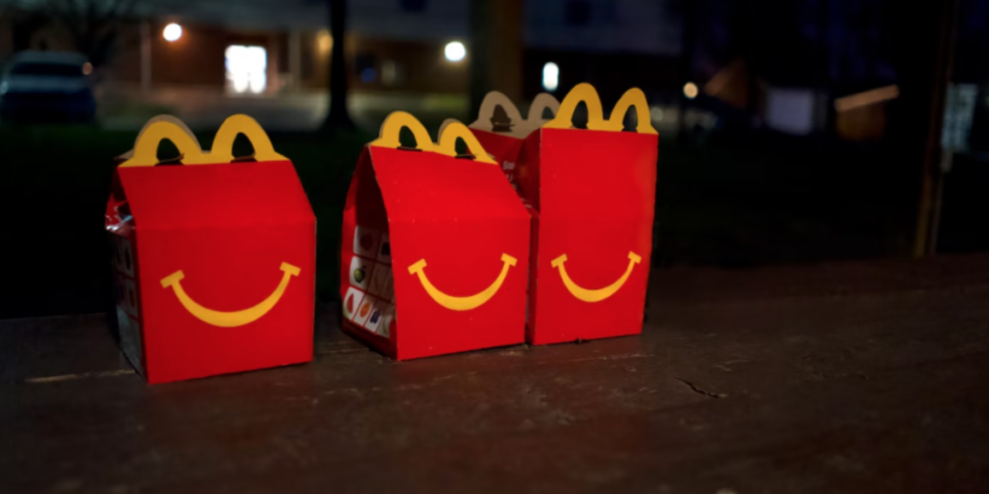Your brand may be your biggest asset. But, is it being harnessed as well as it could be? Liam Shaw from Wrappr explains how attention-grabbing campaigns can unlock a brand’s full potential and help with brand building.
Marketing and advertising budgets have been declining seven times faster than consumer spending. We are facing a downturn, but rather than racing to cut brand investment, marketers should first ensure that they are using one of their biggest assets, brand identity, to its full potential.
Great brands know how to cut through for brand building
The Golden Arches have the power to capture your attention, especially when you’re hungry. When you’re “in the market” for lunch, the Golden Arches nestled amongst the clouds always manage to catch the eye, don’t they?
Maccas is also famous for how it uses the Golden Arches in its advertising. Directional billboards on freeways will signal that the next exit has a Maccas by simply hiding part of the ‘M’ so it looks like a road, or an arrow to tell you where to go. This brand asset is a superpower for Maccas.
Great brands know the value of distinctive brand assets and how to harness creatively to get the primary message to cut through.
Attention isn’t a spotlight, it’s a filter
Recent marketing attention on ‘attention’ has missed an important clarifying layer. People tend to view attention as a spotlight that they’re able to direct towards whatever they please. However, the evidence is that attention is dictated much more by what is being filtered out of your consciousness.
For example, when your neighbour’s dog is barking whilst you’re trying to write a Pulitzer prize-winning opinion piece, no matter how much you might try to control your attention ‘spotlight’ it just seems to keep focussing on the dog! Barking is an important signal that a brain thinks it needs to let through because it used to mean that you were in danger, rather than now meaning that my neighbour’s Chihuahua thinks it’s a German Shepherd.
The same framing of attention applies to advertising and is why instantly recognisable brands have such a huge marketing advantage, especially during difficult economic times.
These brands have already created neural associations with you, instantly recognisable brands are more likely to be considered relevant and will break through your filters. It’s about becoming more ‘mentally available’ from brand building.
Think of Compare The Market. When you see the Meerkat you immediately have context for what the advertising message is, and it breaks through our ‘unnecessary information’ filters. Simples!
When you notice bright yellow and black signs in a shopping centre, JB Hi-Fi has successfully landed in your consciousness. In all likelihood, you will have existing neural associations between JB Hi-Fi, those colours, and being in a shopping centre. This then gives JB Hi-Fi’s advertising message a stronger chance of getting your attention.
Remember that the medium can be your message.
When you appreciate that your brand can easily be filtered out, you then start looking for media and creative that will break through. It’s also important to remember that the medium which we choose to communicate through can hold as much if not more value than the message itself.
This concept is especially important with outdoor advertising because you only get a glance to make an impact. When you leverage the medium to drive home your message, it is like a cheat code that unlocks a shortcut into your audience’s consciousness by bypassing their filters (in other words #nofilter).
This is the strategy that Jimmy Brings has executed by having a fleet of branded Wrappr vans across Australia – every glance that these assets receive communicates “fast delivery in this local area” simply due to the Jimmy Brings branding being on a van. These vans have become iconic, and synonymous with the brand – a clear example of brand building. These fans have made the brand transferrable into other advertising channels as well, further making the filter cut-through more effective.
Neuroscience has also shown the relative potency of different media. Tracking the brain activity of people who watched a filmed journey featuring 24 outdoor sites around West London showed that unique outdoor advertising elicited stronger emotional responses and memory encoding for brands than standard outdoor advertising did – bingo!
Bring it back to the media plan
In most instances, your brand will not be consciously or rationally considered by your audience. Therefore, to maximise cut-through, your media assets need to leverage the brand identity that customers already associate with you. The right use of your colours, logo, and distinctive brand assets can make your marketing budget work harder.
When the brand identity, medium, and context are aligned, be it Telstra taking over old phone boxes, or sustainability advertising on electric vehicles, your message becomes clear and your ad will cut through more easily.
Great advertising has been doing this for decades, so it’s nothing new. But now we have the data and evidence to understand why it’s so impactful.
—
This article first appeared in https://www.marketingmag.com.au
Seeking to build and grow your brand using the force of consumer insight, strategic foresight, creative disruption and technology prowess? Talk to us at +971 50 6254340 or engage@groupisd.com or visit www.groupisd.com/story


